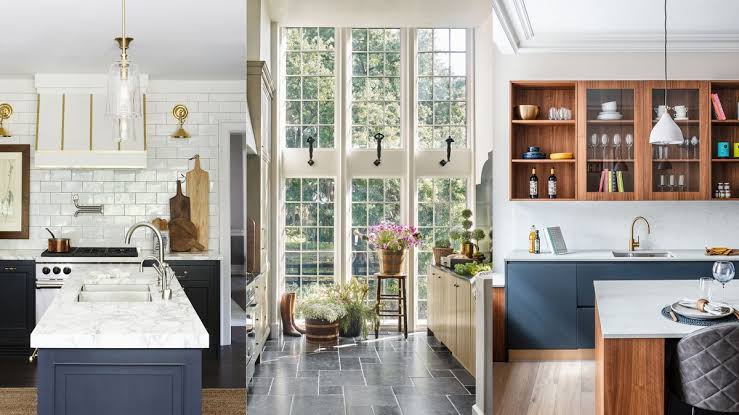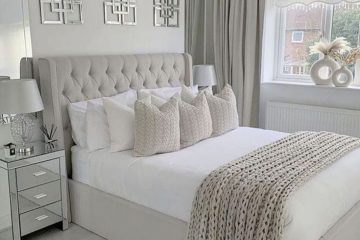Introduction: The Challenge of Small Kitchen Design
Designing a small kitchen presents unique challenges. Limited space requires careful planning to ensure the kitchen is not only functional but also stylish and comfortable. One of the most important aspects of small kitchen design is selecting the right cabinets. Cabinets play a critical role in maximizing storage and enhancing the overall aesthetic of the space. However, choosing the perfect cabinets for a small kitchen involves more than just picking a style—it requires a thoughtful approach to layout, storage solutions, and materials.
Professional cabinet installation ensures that your cabinets are securely mounted and perfectly aligned, contributing to the longevity and overall aesthetic of your kitchen. With thoughtful planning and attention to detail, you can transform your small kitchen into a space that maximizes both style and functionality.
In this article, we’ll explore how to choose the best cabinets for small kitchens, focusing on strategies to maximize space and style without sacrificing functionality.
Prioritizing Storage: Making Every Inch Count
Smart Layouts for Optimal Use of Space
In a small kitchen, the layout of your cabinets can make or break the space. A well-planned layout ensures that every inch is utilized effectively, providing ample storage while maintaining a functional workflow. When designing a small kitchen, it’s essential to consider how the cabinets will fit into the overall layout and how they can be arranged to maximize storage and accessibility.
Effective Layout Strategies:
- Galley Kitchens: In a galley kitchen, where space is often tight, cabinets should be arranged along two parallel walls. This layout makes use of vertical space and keeps everything within easy reach, creating an efficient work triangle between the stove, sink, and refrigerator.
- L-Shaped Kitchens: For L-shaped kitchens, cabinets can be placed along two adjacent walls, providing a corner for additional storage. Consider installing corner cabinets with pull-out shelves to make use of otherwise wasted space.
- One-Wall Kitchens: In single-wall kitchens, which are common in small apartments, the challenge is to fit everything along one wall without making the space feel cramped. Tall cabinets that extend to the ceiling can provide extra storage without taking up floor space, while open shelves can keep the area feeling light and airy.
By choosing a layout that makes the most of your kitchen’s footprint, you can create a space that is both functional and aesthetically pleasing.
Vertical Storage: Taking Advantage of Height
When floor space is limited, it’s crucial to think vertically. Utilizing the height of your kitchen with tall cabinets or stacked cabinets can significantly increase storage capacity without making the space feel crowded.
Vertical Storage Solutions:
- Tall Cabinets: Tall, narrow cabinets that reach the ceiling can store items that are not used frequently, such as seasonal kitchenware or extra pantry items. These cabinets keep the kitchen organized and free up lower cabinets for everyday essentials.
- Stacked Cabinets: Installing stacked cabinets, where a smaller cabinet sits above a standard one, provides additional storage for smaller items like spices, cookbooks, or glassware. This design maximizes storage without taking up extra floor space.
- Open Shelving: Open shelves placed above countertops or between cabinets can provide additional storage while keeping the kitchen feeling open. Use these shelves to display decorative items or to keep frequently used items within easy reach.
Maximizing vertical space allows you to increase storage capacity in a small kitchen without compromising on style or functionality.
Choosing Cabinet Styles: Balancing Form and Function
Frameless Cabinets: A Sleek, Space-Saving Option
Frameless cabinets, also known as European-style cabinets, are an excellent choice for small kitchens. Their sleek design and full-overlay doors offer a clean, modern look while maximizing interior space. Without a face frame, frameless cabinets provide easier access to the cabinet interior, making them ideal for compact spaces.
Advantages of Frameless Cabinets:
- Increased Storage: The absence of a face frame means that frameless cabinets offer more usable space inside, which is particularly valuable in small kitchens.
- Modern Aesthetic: Frameless cabinets provide a seamless, streamlined appearance that works well in contemporary or minimalist kitchen designs.
- Easy Accessibility: Full-overlay doors on frameless cabinets allow for wider openings, making it easier to access items stored inside, which is especially useful in tight spaces.
Frameless cabinets are a practical and stylish option for small kitchens, combining modern design with functional benefits.
Glass-Front Cabinets: Creating the Illusion of Space
Another effective strategy for making a small kitchen feel larger is to incorporate glass-front cabinets. Glass doors can make the kitchen appear more open by reducing the visual weight of the cabinets and allowing light to pass through.
Benefits of Glass-Front Cabinets:
- Enhanced Light: Glass-front cabinets reflect light, making the kitchen feel brighter and more spacious. This effect is especially beneficial in small kitchens with limited natural light.
- Visual Interest: The transparency of glass-front cabinets adds visual depth to the kitchen, creating the illusion of more space. They also provide an opportunity to showcase attractive dishware or glassware.
- Variety of Styles: Glass-front cabinets are available in a range of styles, from traditional to modern, allowing you to choose an option that complements your kitchen’s design.
Glass-front cabinets can transform a small kitchen by making it feel more open and inviting, while also adding a touch of elegance.
Selecting Materials and Finishes: Enhancing Durability and Style
Durable Materials for Long-Lasting Cabinets
In a small kitchen, where every piece of furniture is likely to see frequent use, choosing durable materials for your cabinets is essential. High-quality materials not only extend the life of your cabinets but also contribute to the overall aesthetic of the kitchen.
Recommended Materials:
- Plywood: Plywood is a strong and stable material that resists warping and moisture damage, making it an excellent choice for cabinet construction. It’s particularly well-suited for kitchen environments where humidity levels can fluctuate.
- Solid Wood: Solid wood cabinets offer timeless appeal and exceptional durability. Although more expensive, they provide a natural look and can be refinished if needed, making them a long-term investment for your kitchen.
- MDF: Medium-Density Fiberboard (MDF) is a cost-effective alternative that provides a smooth surface ideal for painted finishes. While less durable than plywood, MDF is a good choice for homeowners looking to achieve a specific aesthetic on a budget.
Selecting the right materials ensures that your cabinets can withstand the rigors of daily use while maintaining their beauty over time.
Light Finishes for a Brighter Space
In small kitchens, choosing the right finish for your cabinets can have a significant impact on the overall look and feel of the space. Light-colored finishes are particularly effective in making a small kitchen appear larger and more open.
Popular Light Finishes:
- White or Off-White: White cabinets are a classic choice for small kitchens, as they reflect light and create a clean, airy atmosphere. Off-white tones can add warmth while maintaining the same space-enhancing effect.
- Pale Gray: Pale gray cabinets offer a modern alternative to white, providing a subtle contrast while still keeping the kitchen bright and open. Gray works well in both traditional and contemporary designs.
- Natural Wood Tones: Light wood finishes, such as maple or birch, add warmth and texture to the kitchen while keeping the space feeling open. These finishes are versatile and can complement a variety of design styles.
Light finishes help to brighten the kitchen and create the illusion of a larger space, making them an excellent choice for small kitchens.
Maximizing Functionality: Practical Cabinet Features
Pull-Out Shelves and Drawers: Easy Access in Tight Spaces
In small kitchens, it’s important to ensure that every cabinet is fully functional and easy to use. Pull-out shelves and drawers are practical features that can make a big difference in the accessibility and organization of your kitchen.
Benefits of Pull-Out Shelves and Drawers:
- Maximized Storage: Pull-out shelves allow you to use the full depth of the cabinet, providing more storage space and making it easier to organize items.
- Easy Access: With pull-out drawers, you can easily access items stored at the back of the cabinet without having to reach or bend awkwardly. This feature is particularly useful in lower cabinets.
- Better Organization: Pull-out shelves and drawers make it easier to keep your kitchen organized by providing dedicated spaces for pots, pans, spices, and other kitchen essentials.
These features enhance the functionality of your cabinets, making your small kitchen more efficient and user-friendly.
Conclusion: Creating a Functional and Stylish Small Kitchen
Designing a small kitchen requires careful consideration of every detail, especially when it comes to choosing the right cabinets. By prioritizing storage, selecting the right materials and finishes, and incorporating practical features, you can create a kitchen that is both functional and stylish. Whether you opt for frameless cabinets for a sleek look, glass-front cabinets to open up the space, or durable materials for long-lasting quality, the choices you make will have a significant impact on the overall success of your design.
Professional cabinet installation ensures that your cabinets are securely mounted and perfectly aligned, contributing to the longevity and overall aesthetic of your kitchen. With thoughtful planning and attention to detail, you can transform your small kitchen into a space that maximizes both style and functionality.



